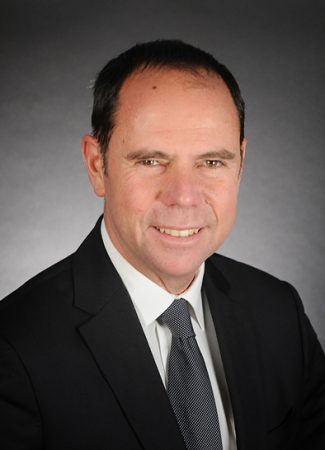As part of the Energy Transition process, and in line with the EU Green Deal – namely aimed at reducing CO2 emissions by way of increasing the total share of Renewable Energy Sources (RES) in its energy mix and increasing energy efficiency, many national governments announced their intention to phase out coal, the most polluting fossil fuel currently used to generate electricity.
Such decision has been further supported by the fact that coal-fired power plants have become ever less profitable, due to the dramatic increase of carbon emission (EU ETS) prices in recent months.
In addition, EU financial institutions, including the ECB, have introduced a considerable number of coal-restricting policies, and many commercial banks have announced plans to terminate project finance for new coal projects.
Obviously, it remains to be seen how the EU is to tackle the social-economic consequences of doing away with the coal power production sector.
And, finally, the broader and likely most important question of them all: how are the different EU countries going to ensure security of supply once coal is completely phased out?
Over the last five years, Europe has seen more than 50% of its coal-fired power plants close or commit to closing.
Let´s have a look at how some countries are addressing this issue:
Belgium: First EU member country to phase out coal (2016) as a result of ageing power plants not being able to meet EU pollution control regulations. Currently relying mostly on nuclear power generation, which is to be phased out by 2025, plus some RES (namely wind). Expect to increase RES capacity further and build 2-3 CCGTs. Capacity mechanism approved by the government, though subject to EC approval.
France: Phase-out by 2022. Not ambitious enough as less than 2% of the country´s electricity is produced with coal. An emissions performance standard of 550gCO2/MWh will prevent the burning of coal from January 2022. After the closing of le Havre unit, only Cordemais’ coal power plant remains on the grid (due to local congestion issues in Brittany) and might be converted to biomass by 2024. Phased-out coal capacity to be namely replaced with onshore wind and PV.
Germany: Phase-out decided (2038 with option 2035) though not ambitious enough. The only EU country not compliant with the 2030 date target set by the EC. The government has agreed to compensate lignite operators with €4.35bn for closing down their business. This compensation is still subject to the European Commission state aid approval. Also, legislation on coal phase-out is rather complicated, as it includes lignite phase-out contracts, hard coal closure auctions, regional transition plans, etc. Fossil gas bridge to cover for RES intermittency.
Greece: Phase-out by 2028. PPC, the public owned operator of all coal-fired power plants, announced the end of operations of all its existing lignite plants by 2023, with the only exception of the Ptolemaida V plant – still under construction – and which is meant to cease operations in 2028. Aim is to replace coal with gas fired power plants as a transitional measure – and likely subject to a capacity mechanism being put into place – until 100% RES capacity is achieved (note that the country´s geography offers huge potential for the deployment of solar and wind power assets).
Italy: Phase-out by 2025. Not yet translated into law but described as a ‘goal’ under its National Energy and Climate Plan (NECP). Phase-out will heavily rely on the development of RES (30GW solar by 2030), adequate storage and transitional gas capacity. Aim is to replace most of its installed coal generation capacity with gas. A second round of capacity auctions has already been announced by the government.
Poland: Phase-out not yet decided. Most polluting EU country, together with Germany. Despite coal utilities set to receive €14bn in capacity payments from the government, and in order to secure supply, the country is still bringing new coal plants online, rather than new gas-fired plants, hence guaranteeing it´s non-dependence on Russian gas. Planned spin-off of coal assets and state-owned coal mining company PGG likely to operate until 2049 using state aid. EC to determine whether this is in line with EU state aid and competition regulations for subsidies to dying industries.
Spain: Phase-out under discussion (generation trends point to mid-2020s). 5.1GW out of 9,9GW stopped operations in 2020 due to stricter EU air pollution standards. By means of a Just Transition deal struck between the government and affected regions, hard coal mining units ceased operations. Large investments in RES have been made, especially for solar and wind. Significant CCGTs installed capacity to fall back onto when system is stressed. Potential capacity mechanism under discussion.
UK: Phase out by 2024. First country in the world to announce a coal-phase out policy (2015) taking advantage of the fact that some of its coal-fired plants were nearing their end life. Carbon tax of approx. €6/MWh introduced in 2013 and increased to approx. €20/MWh in 2018. Following Brexit, a UK ETS is put into place (very much resembling the EU ETS), and the resulting total carbon cost will certainly speed up the closure of the remaining coal power plants. Large investments already made in RES deployment. RES intermittency to be addressed with Demand Side Response (DSR), the build-up of battery storage capacity and new nuclear power plants already in the pipeline, with some already under construction.
The above is just a brief summary of how a number of EU countries have exited or are planning to exit coal fired power generation.
To this end, and thanks to EU policy applicable to all of the Member countries, several measures have already been put in place that ensure a proper and timely coal phase-out process, namely:
- Necessary approval by the EC to introduce capacity mechanisms: this will guarantee that such mechanisms are in line with state-aid and / or competition requirements, and that they are adequately used. In this last respect, for example, the EU has prevented countries paying “capacity contracts” to subsidise uneconomic coal plants. In the UK, coal plants were paid to keep operating, slowing their closure, and in Poland 15-year contracts are even planned to encourage new coal plants. The EU therefore brought in a law that – using an emissions performance standard of 550 gCO2/KWh – will prevent capacity contracts being paid to coal plants from 2025.
- The so-called ‘Just Transition’ Fund: this fund provides support for communities and regional economies that depend on jobs in fossil fuel industries, in particular coal, and are trying to transition workers into new industries and roles.
- And – possibly the most important one – the EU ETS: EUAs have seen their price increase from €5/Tn in 2016 to the current €50/Tn. A upper trend supported by the so-called EU “Fit for 55” package (the EU draft climate law currently under discussion) which recently announced envisaging a minimum. 55% CO2 cut from 1990 levels (the current target being a min. 40% cut), amongst other restrictive measures. This rally in carbon prices has pressured generation spreads, putting coal at an even greater disadvantage with regards to other technologies.
As can be observed, the various measures put in place both by the EC and EU member states, aimed at decarbonizing Europe´s power sector, will likely see coal be phase-out much earlier than initially anticipated. Let´s wait (hopefully for not too long) and we shall see…
Mica Sternhagen
« Picture from Shutterstock »






